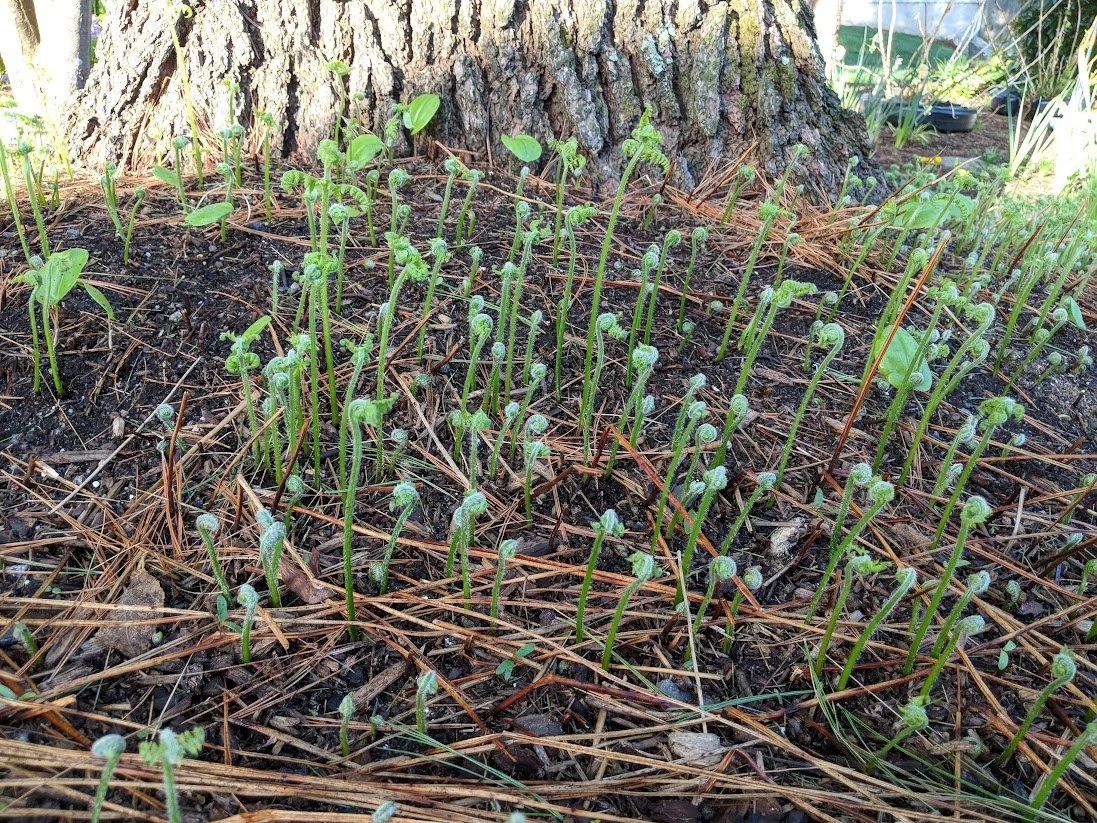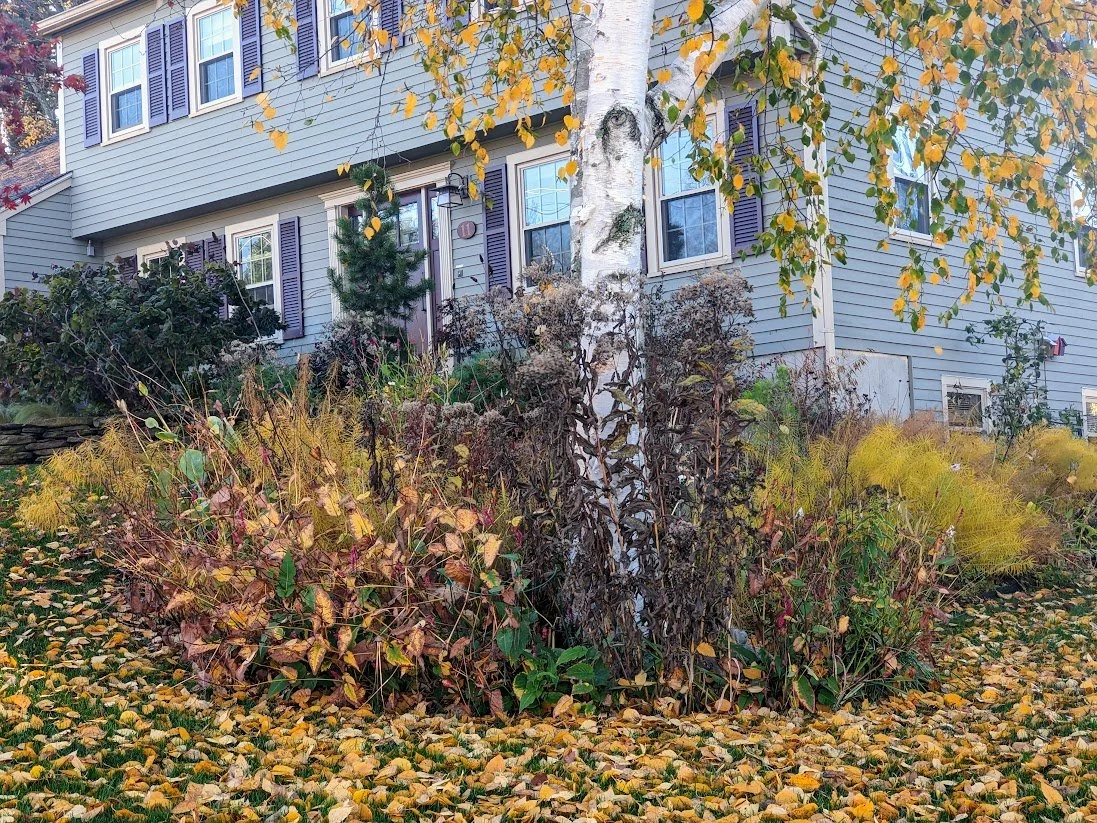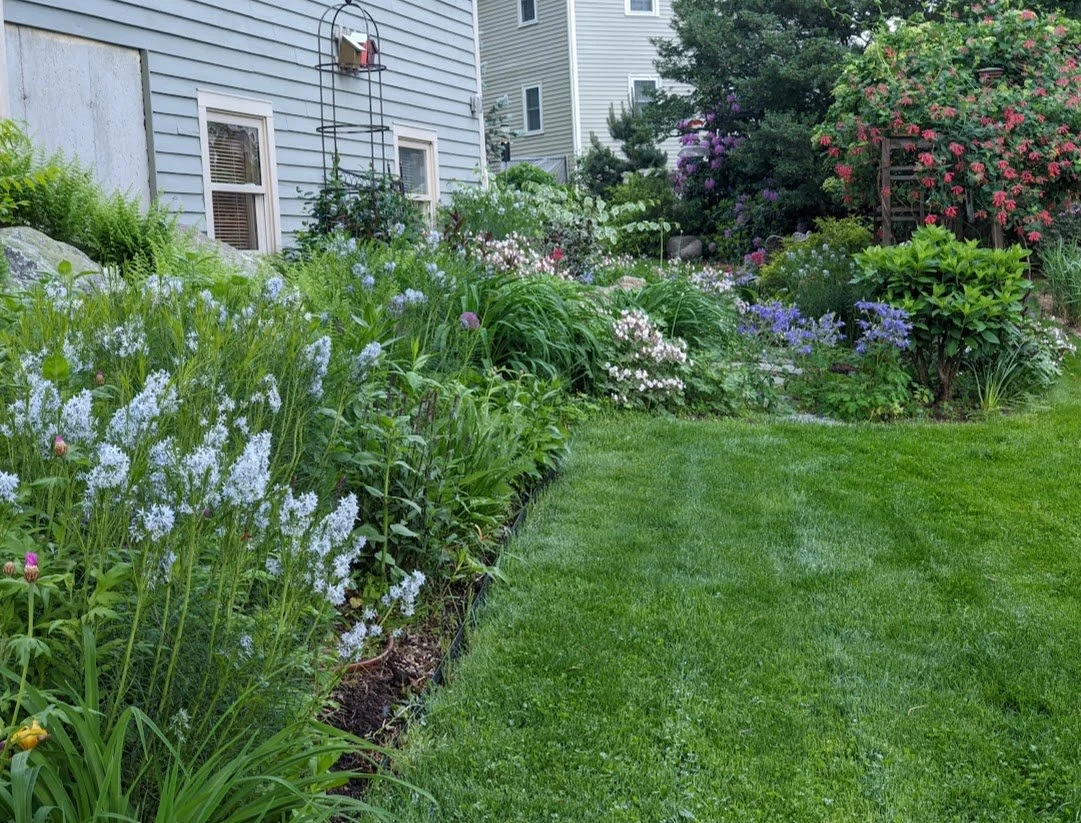No raking required ~ a liberating practice!
We Americans seem to be in a competition with our neighbors as we race toward ‘clean up’ every spring. Just because our parents raked their gardens doesn’t mean we need to continue this harmful practice. This virtue signaling of ‘caring’ results in massive habitat destruction for our native bees, butterflies, beetles and more.
Every summer, gardeners comment ‘we just don’t seem to have as many bees and butterflies this year’. My response is usually ‘well, you likely raked them all up and sent them to the landfill last fall or this spring’. This statement is usually met with skepticism. Don’t take my word for it - read for yourself about how imperiled our invertebrates are here.
Pollinator conservationist, Heather Holm, coined the term ‘soft landing’ for the practice of pairing native plantings underneath native ‘keystone’ trees to encourage habitat for invertebrate reproduction.
I have been following this practice for years under two of our mature keystone trees - a large white pine and a large river birch. The idea is that our native trees are host plants for invertebrates who begin their lives as eggs, then caterpillars in the trees. The caterpillars (and in some cases later stage chrysalids and cocoons), drop down during the fall to burrow into the leaf litter and plant debris, completing their life cycle and emerging in spring. Please read Heather’s explanation here!
Here is a series of photos illustrating the white pine soft landing and emergence of ferns through last year’s debris which will remain in place. As it decays, it will enrich the soil and provide additional protection from drought. This soft landing is never raked and all debris returns to the soil to nurture next year’s plants.
In The Big Little Garden, 99% of garden debris is left to decompose in the plant beds. Only large fallen limbs and excessive pine cones are gathered by hand and removed in the spring. If leaves have accumulated to a depth of more than 6” or so, I carefully relocate them to other areas on our property where invertebrates will have the opportunity to finish over wintering and emerge ‘when the time is right’ for their species.
I used to shred leaves and return them to the garden beds as mulch. Now, I wait until early June to shred, and I even minimize this practice because insects like fireflies need 2 years in leaf litter to develop to maturity. I don’t like the thought of sending them to their deaths before they have had a chance to emerge. News flash: in most cases, it’s just not necessary to lay down mulch every year! Too much mulch inhibits plant growth ~ and products trucked in from unknown sources can introduce foreign invaders into the gardens.
pretty and productive ~ it really works!
Even the most delicate spring ephemerals emerge through last year’s debris. The following images depict the emergence of spring bulbs and perennials in the white pine soft landing. Crocus, erythronium and leucojum bloom in early spring, providing pollen and nectar for early emerging native bees. Four different varieties of native ferns thrive in the decaying duff.
learning to see differently
When we choose to ‘go beyond pretty’ in our gardens and embrace ecological gardening practices, we no longer see a mess. We no longer see decay. We see beautiful, beneficial habitat that will sustain all of our wildlife throughout the seasons.
The following succession of images shows the progression of one of my mostly native garden beds sited under our large birch tree. The river birch is a host plant for a myriad of moths and butterflies, including our eastern tiger swallowtail! In the fall, plants dry and drop leaves and seeds, leaving behind beautiful memories of what was and what is yet to come. In late April, I simply cut off the tops of remaining plant stems (staggering cuts and leaving hollow stems to around 8” for stem nesting bees). I am always on the lookout for butterfly chrysalids attached to plant stems and avoid cutting down any that appear viable. By late May, the garden has re-emerged and has entirely cloaked the unraked debris. Over the years, this practice has resulted in improved soil, better water retention, and more vigorous plants. No raking was every needed!
amsonia, October 27
amsonia, November 30
amsonia, June 1st
The birch bed soft landing has helped to support many native insects, including the beautiful clear-wing or ‘hummingbird hawk moth’. The amsonia, nearby red valerian and honeysuckle vine on the fence are all host plants for this incredibly fascinating creature. The only moth that you are likely to see during daytime hours, it is frequently mistaken for a super tiny hummingbird due to its ability to hover while nectaring in the garden.
So, liberate yourself from ‘cleaning up’ the garden and rejoice in the resulting explosion of gorgeous creatures that call your garden ‘home’.










